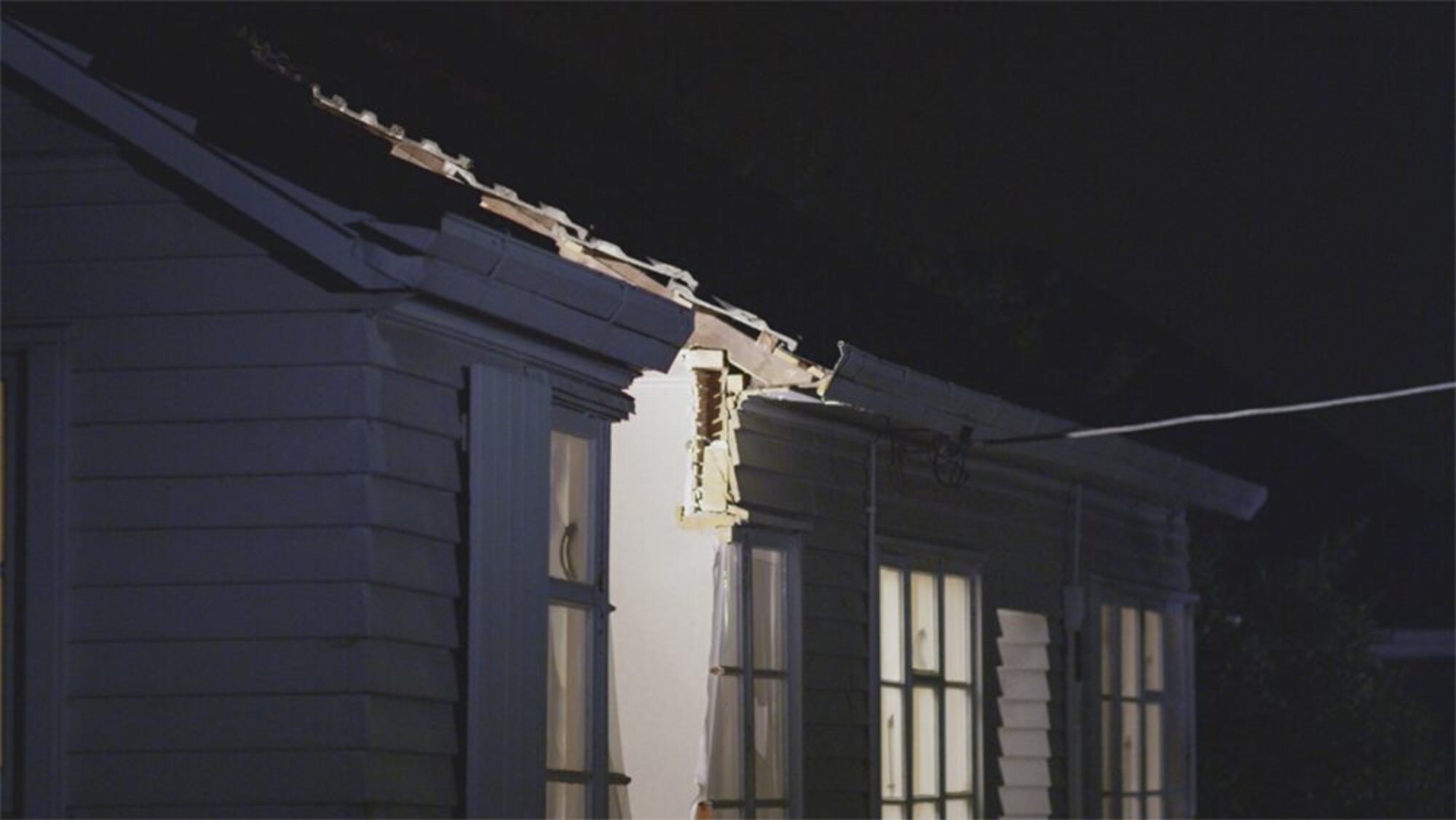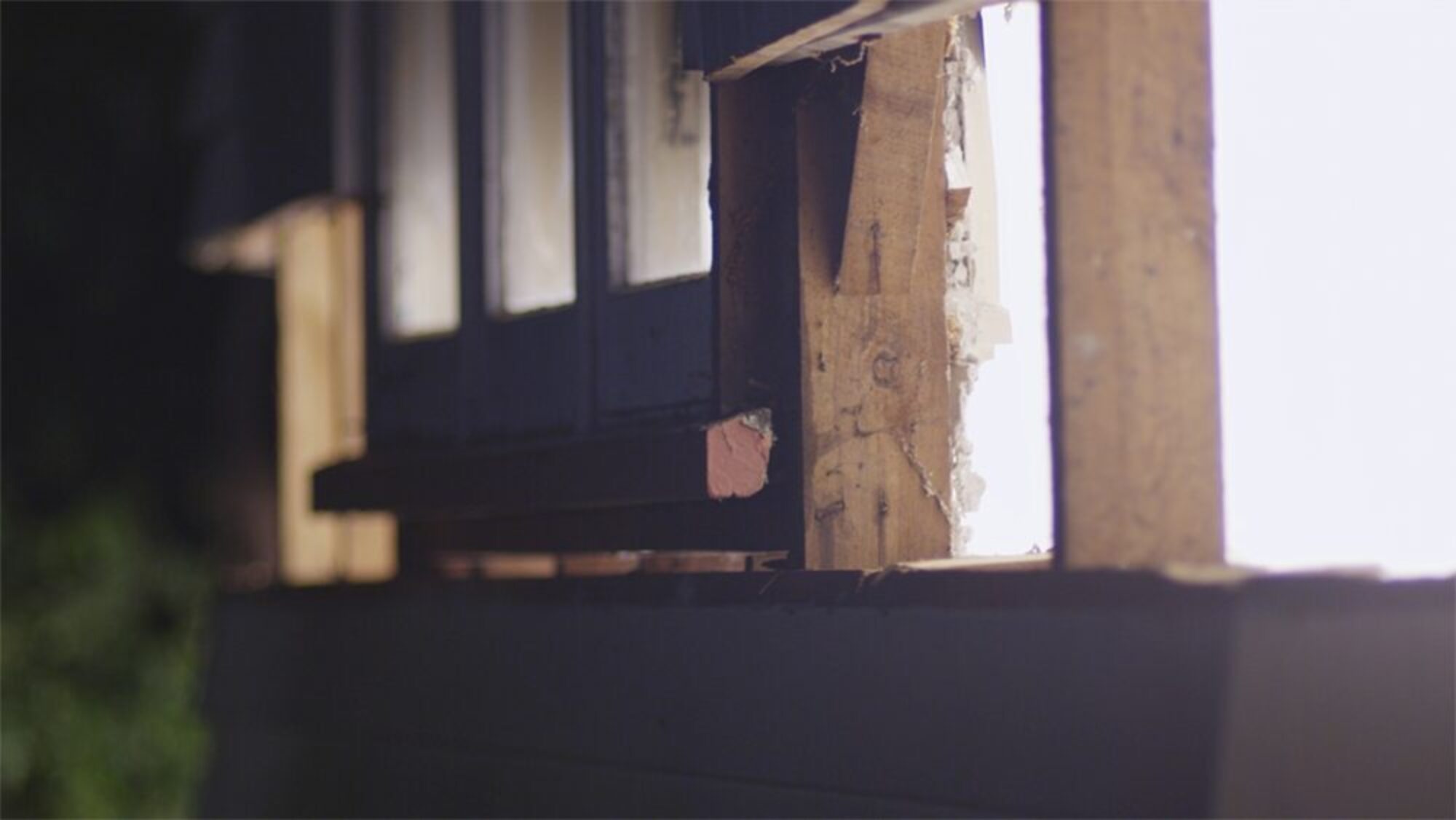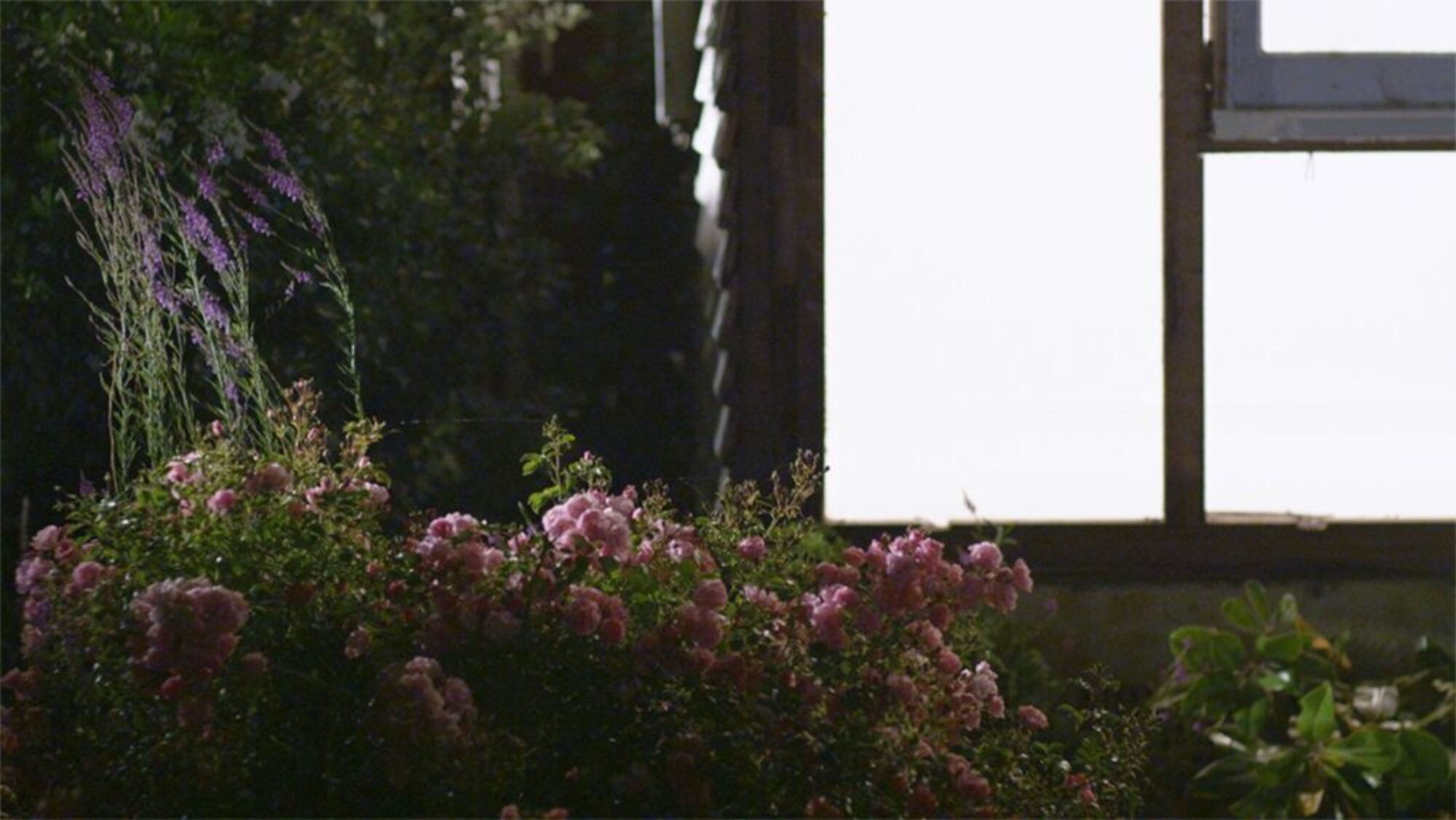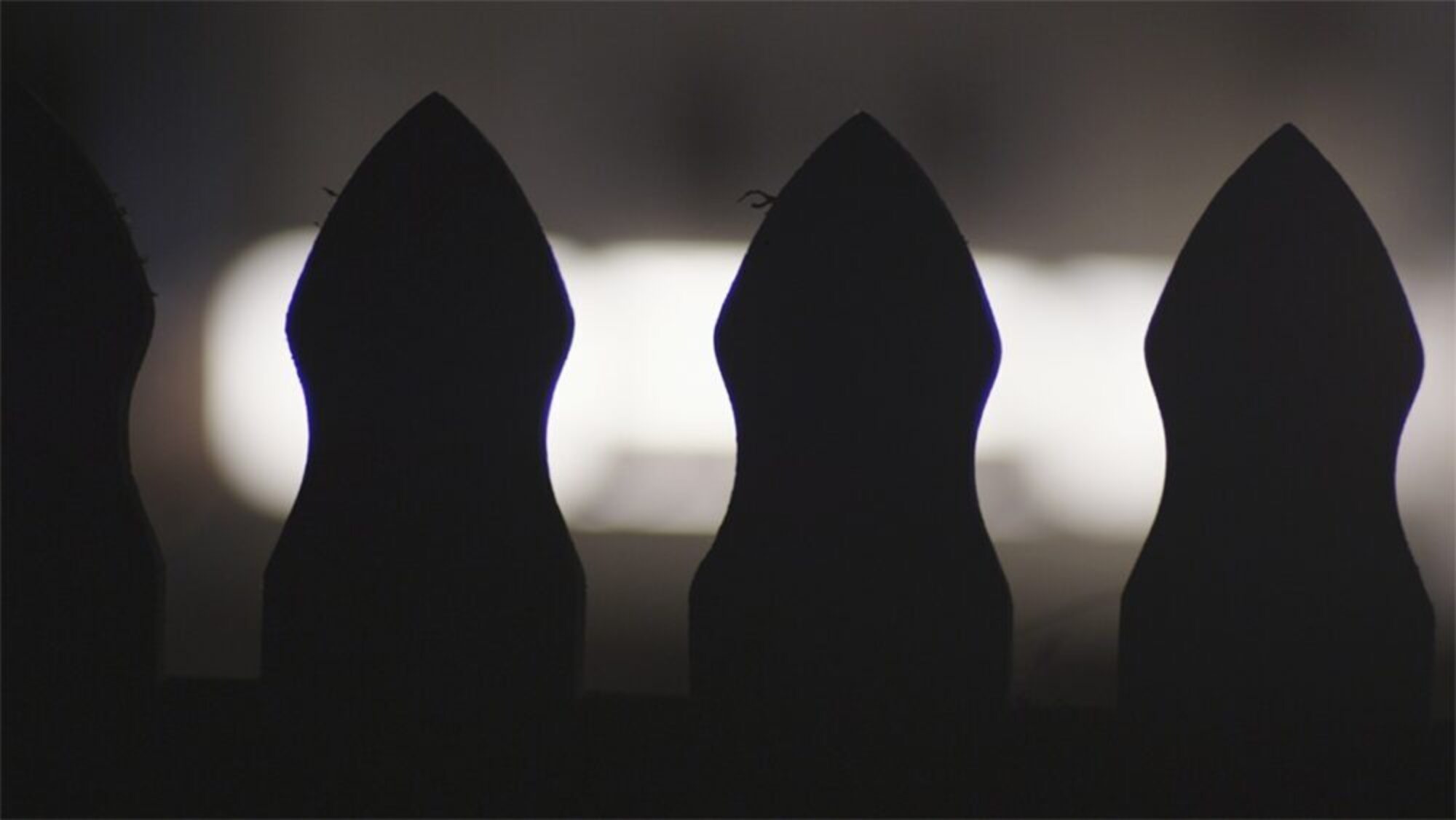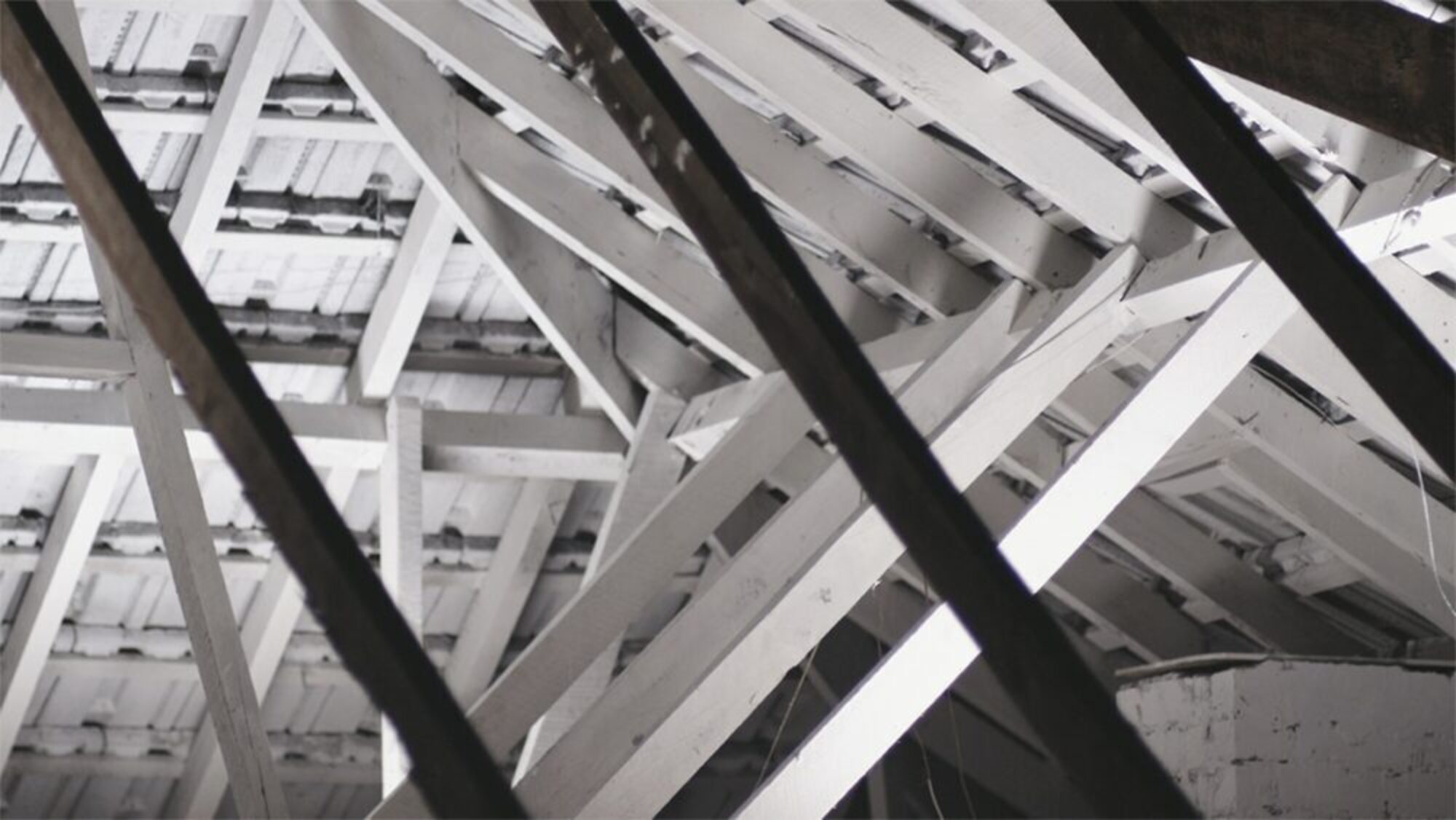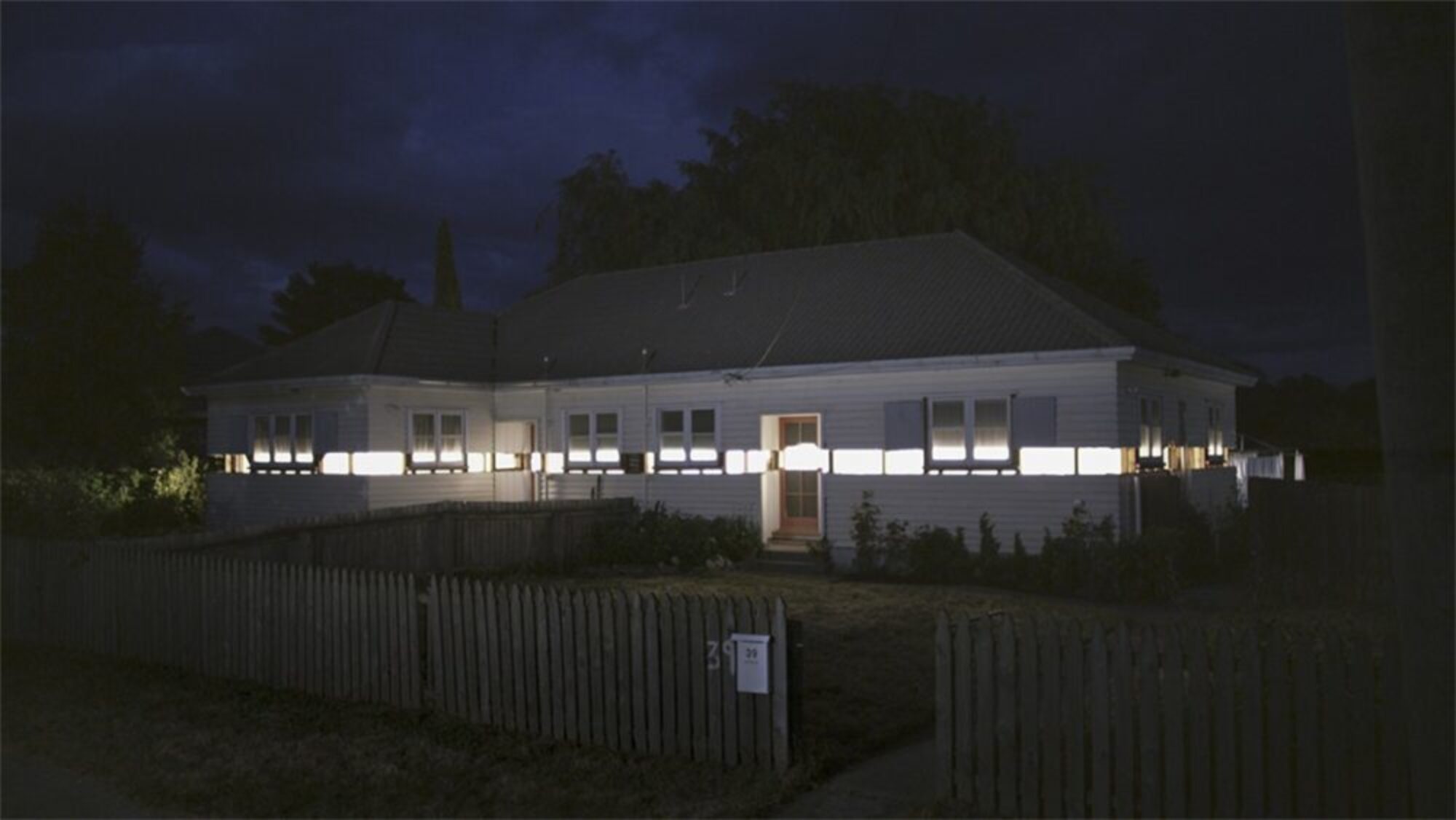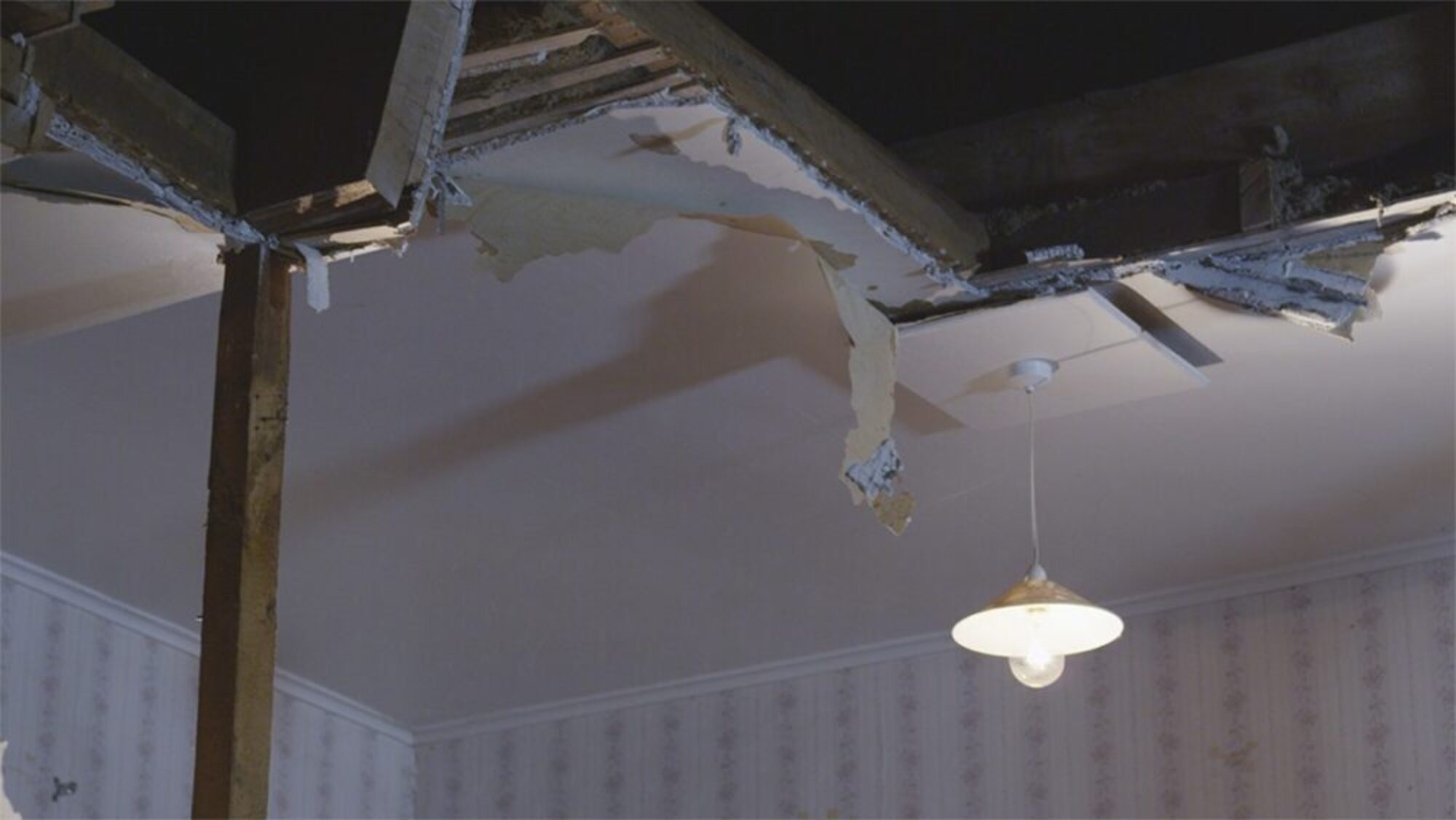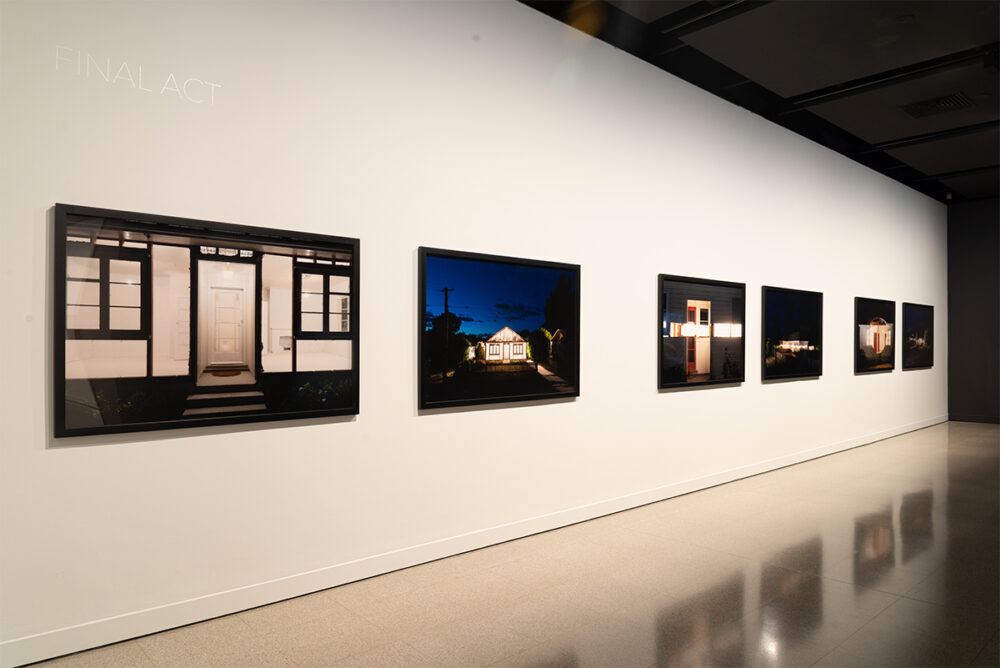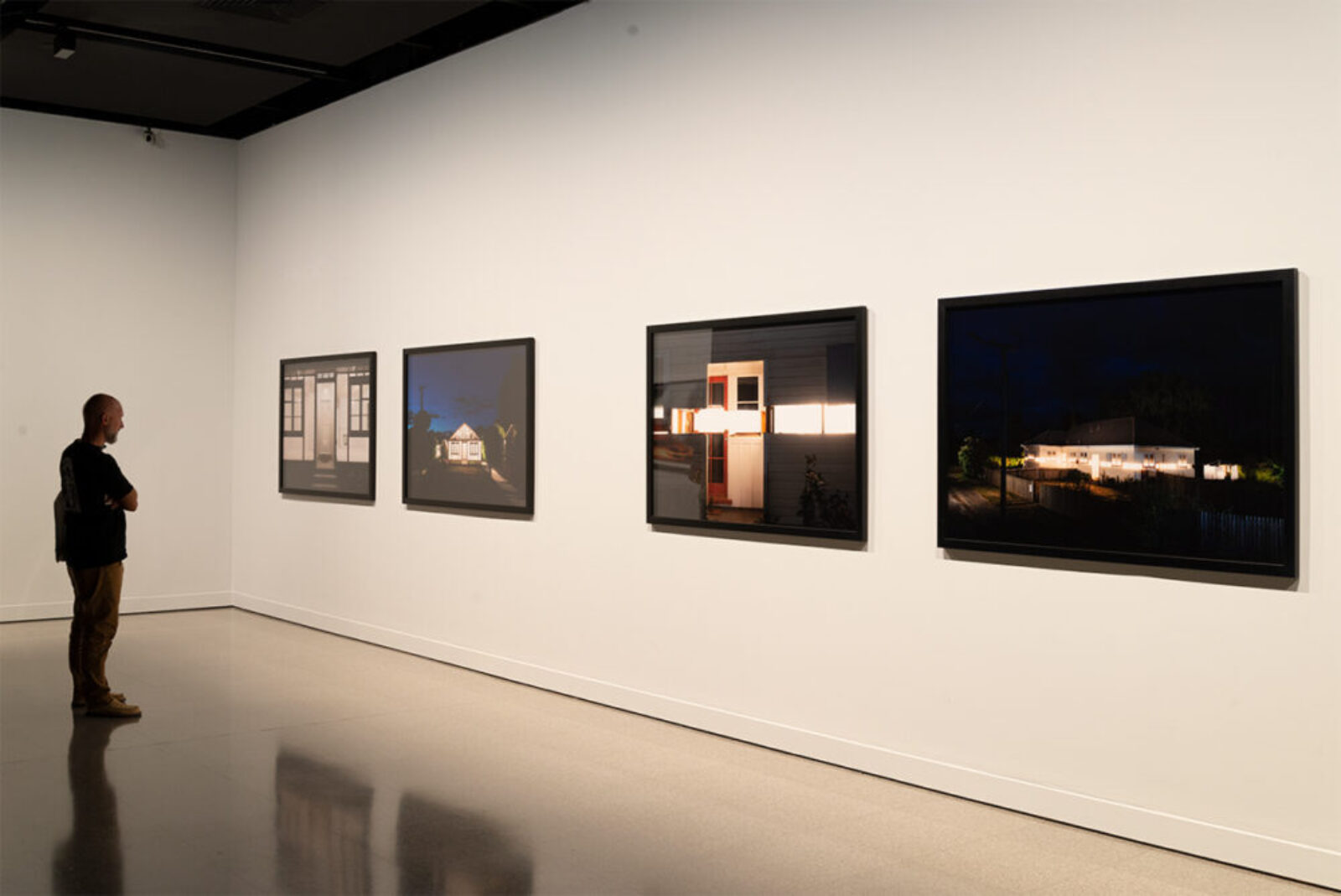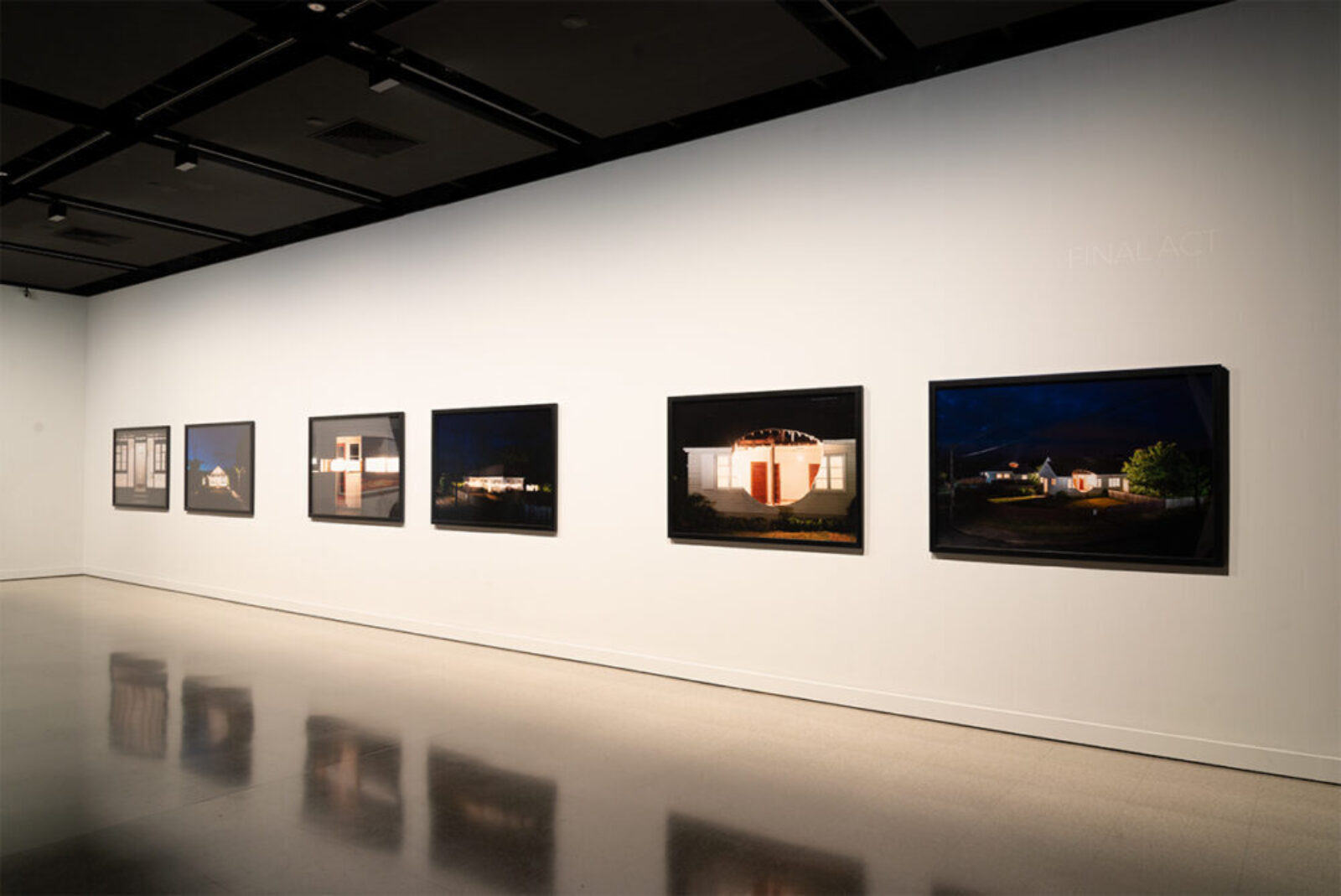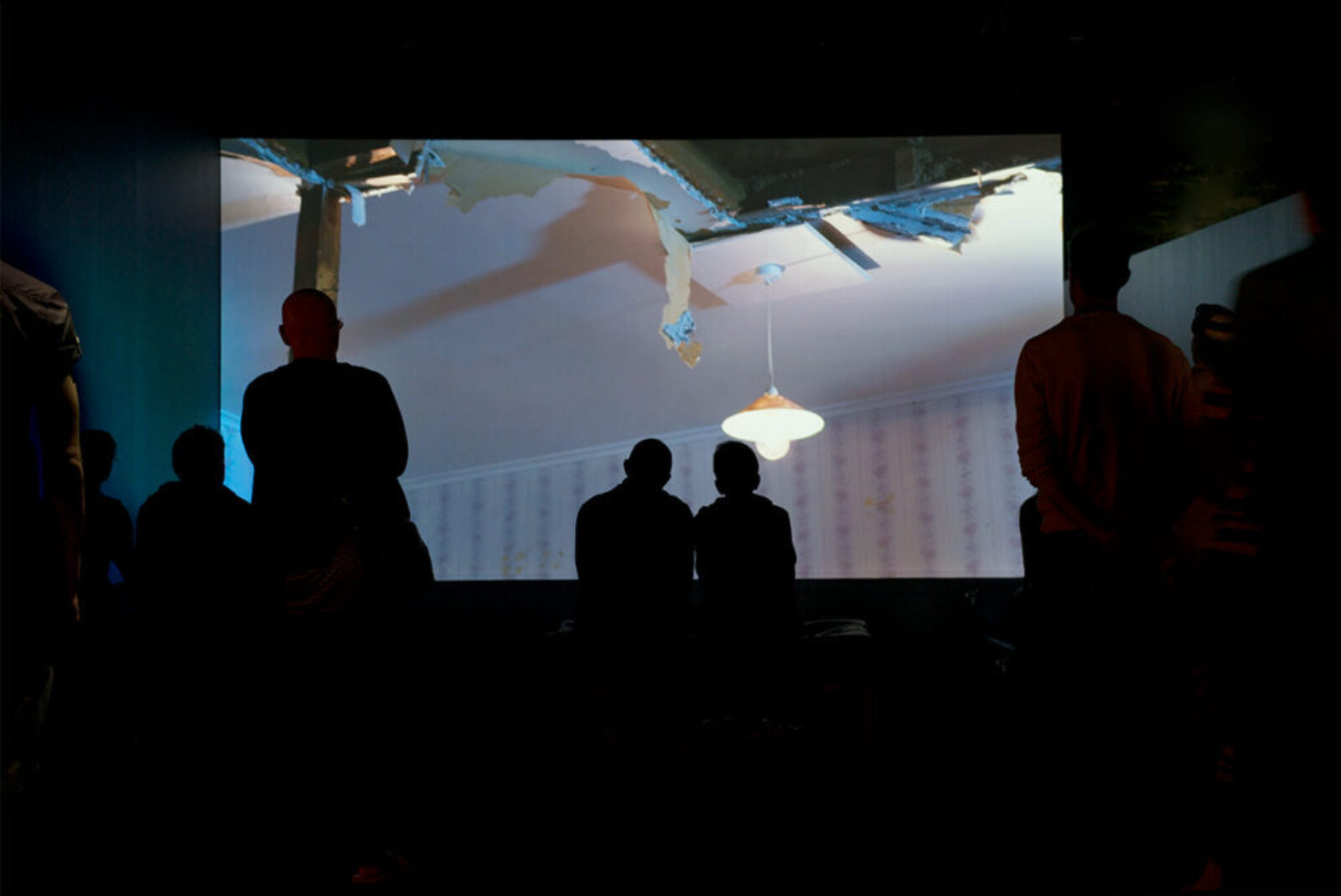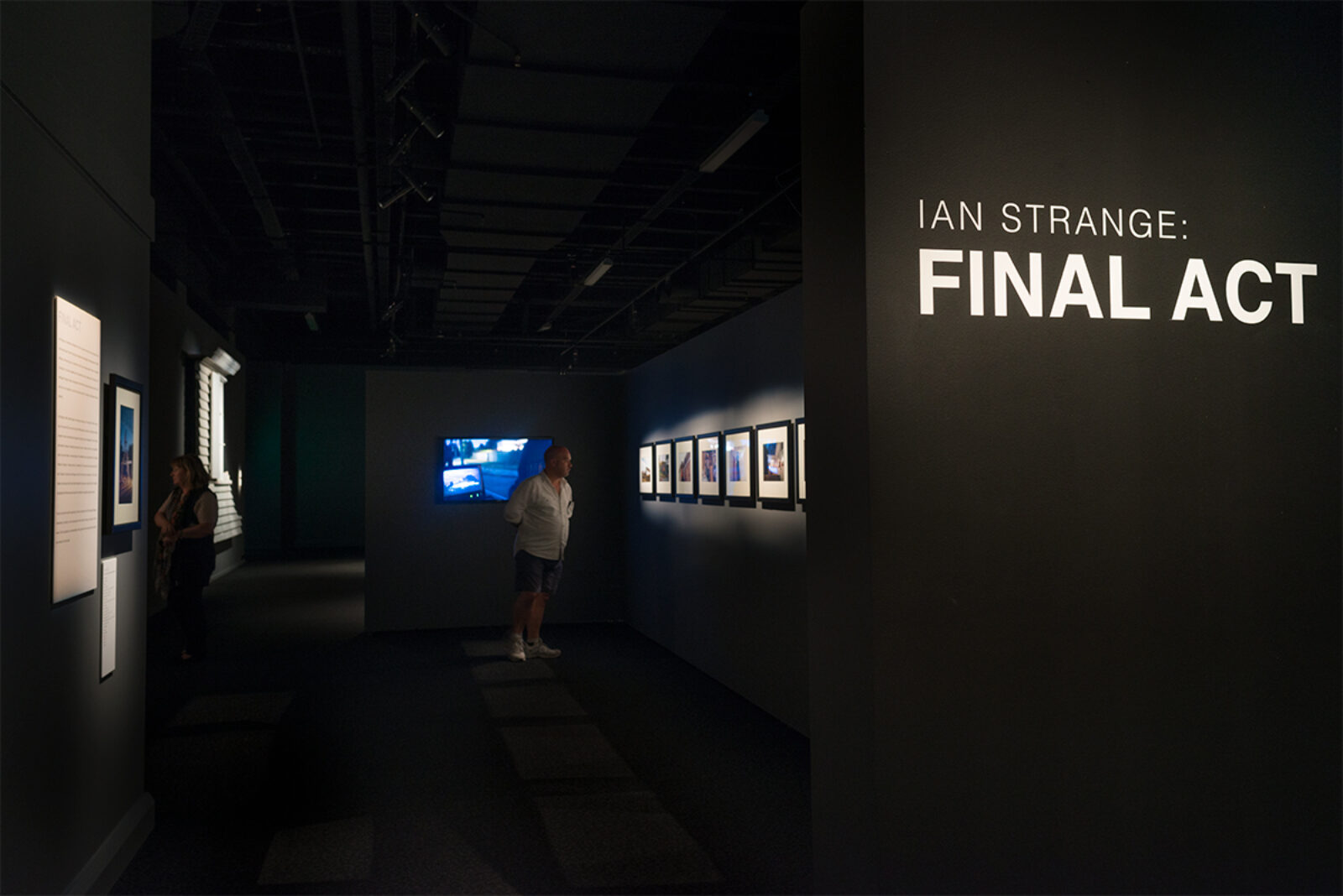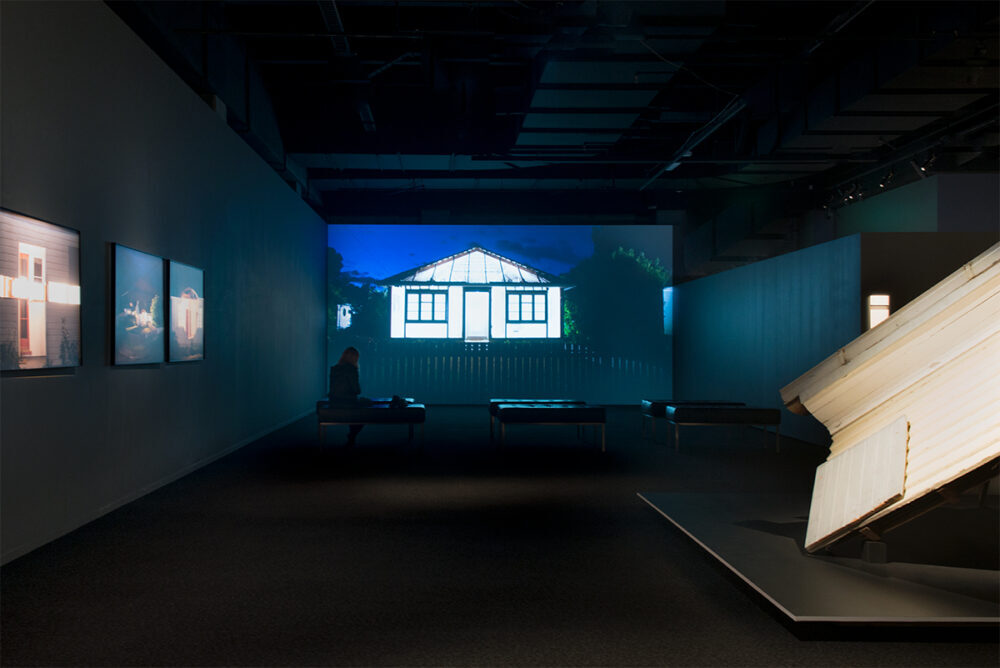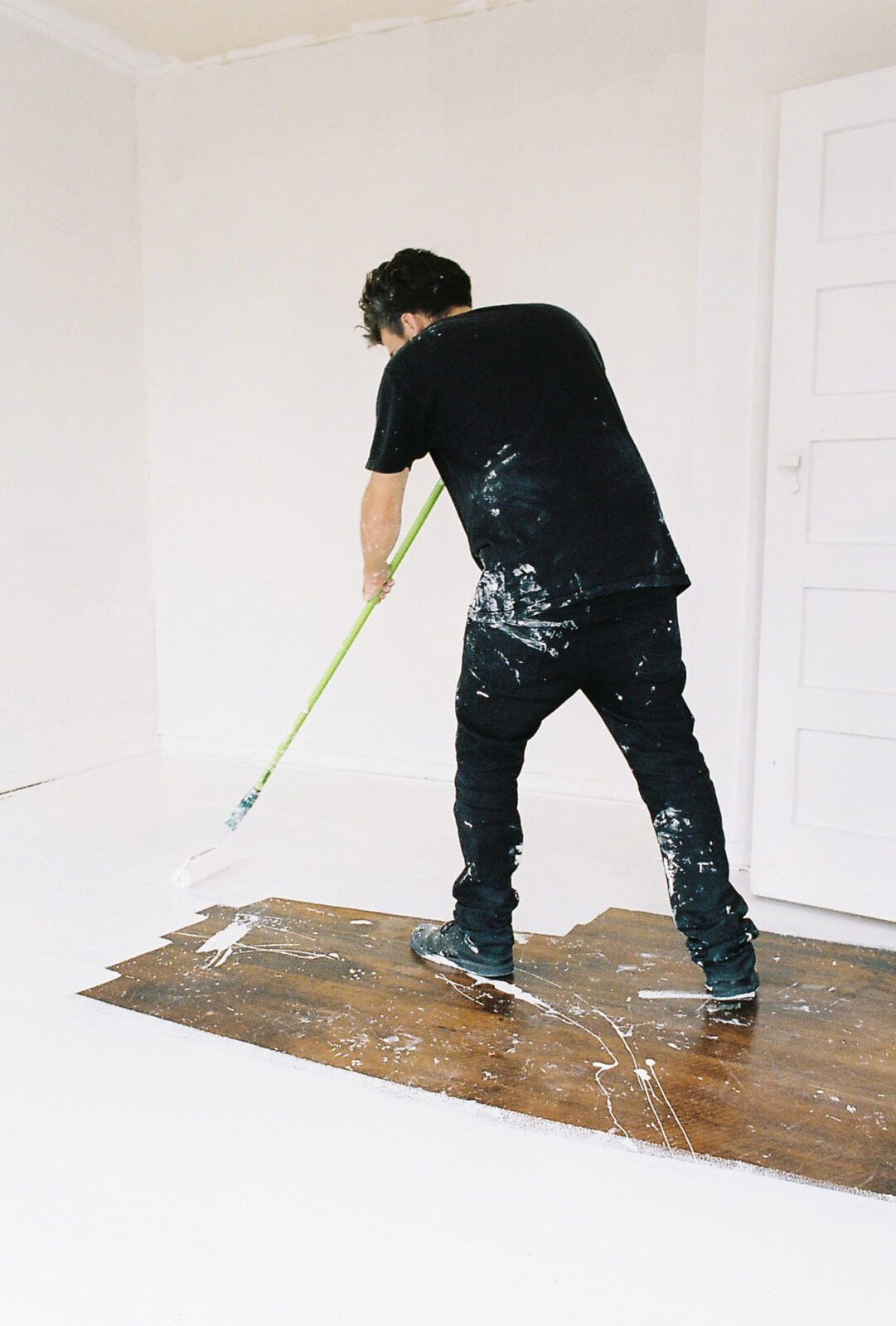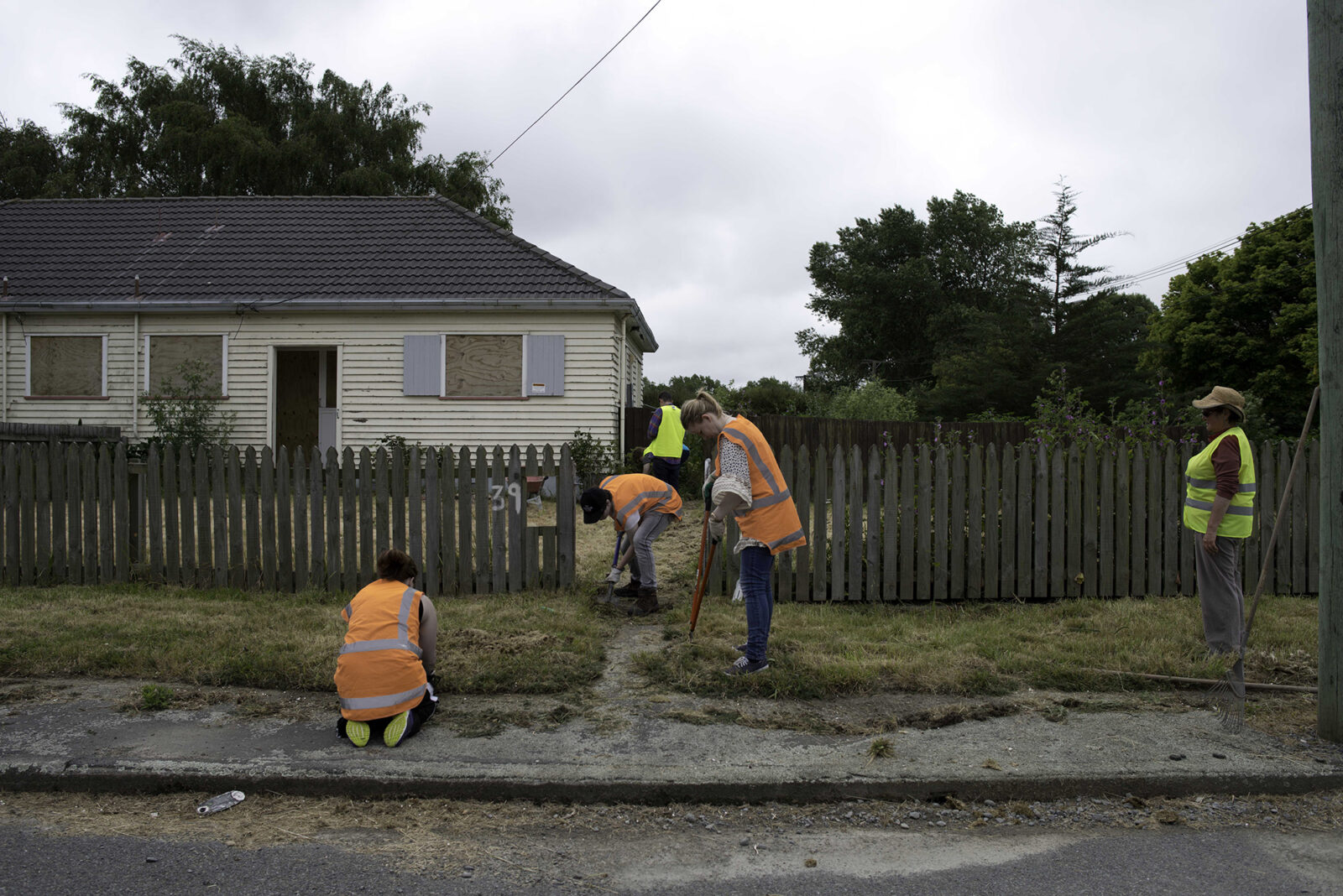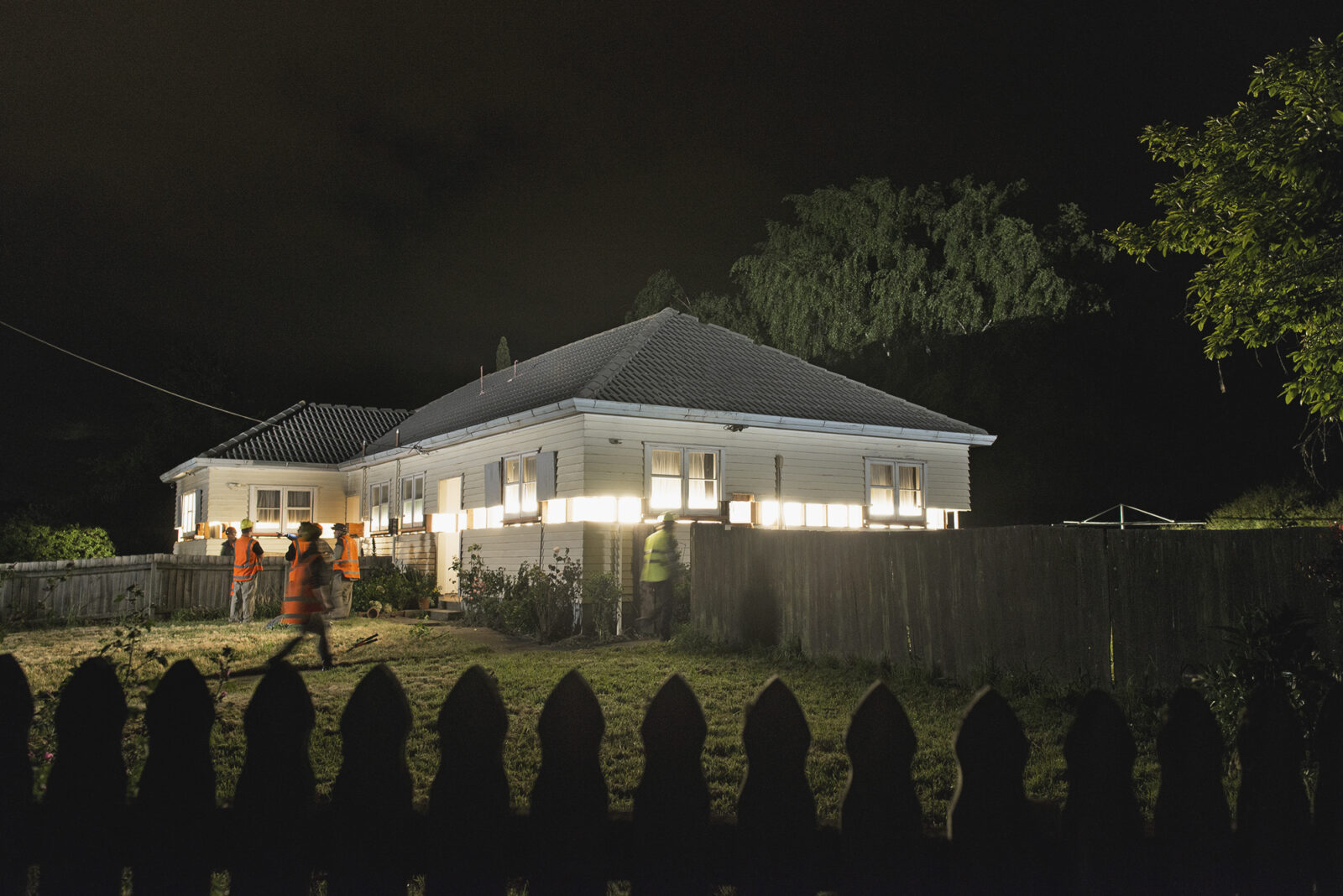FINAL ACT, 2013
Site-responsive architectural interventions, photography, film, and exhibition work
FINAL ACT was created in Christchurch, New Zealand in 2013 at the invitation of Rise Festival and the Canterbury Museum. The series of interventions was commissioned as a response to the devastating 2010 and 2011 earthquakes, which caused what became known as the residential red zone, an area with over 16,000 homes slated for demolition.
Developed over a year and executed on-site over a period of two months, four architectural interventions were created onto houses on a single street in the residential red zone. The interventions, film, and photographic works were created in collaboration with festival and museum staff, volunteers, former residents, and community groups alongside local film crews. FINAL ACT was also a collaboration with renowned New Zealand cinematographer, Alun Bollinger.
With the red zone sealed off for three years following the earthquake, damaged homes were left boarded up awaiting demolition, streets were cracked, and gardens had overgrown. The weeks leading up to the interventions saw the meticulous restoration of the exteriors of four of these homes and their streets in an attempt to return them to an index of their original state. The intervention works were then created through engineered incisions directly into the houses themselves, and collaborative work with Bollinger installing and filming the light installations over three days and nights.
An exhibition of the six resulting photographic works, single-channel film work, selected sculptural artifacts, and drawings from FINAL ACT premiered in an eponymous solo exhibition at the Canterbury Museum, New Zealand in December 2013. Editions of the photographic and film works, as well as the artifacts from the homes, were also retained in the museum's collection, acting as a permanent emotive archive of these lost homes and neighborhoods.
Photographic Works
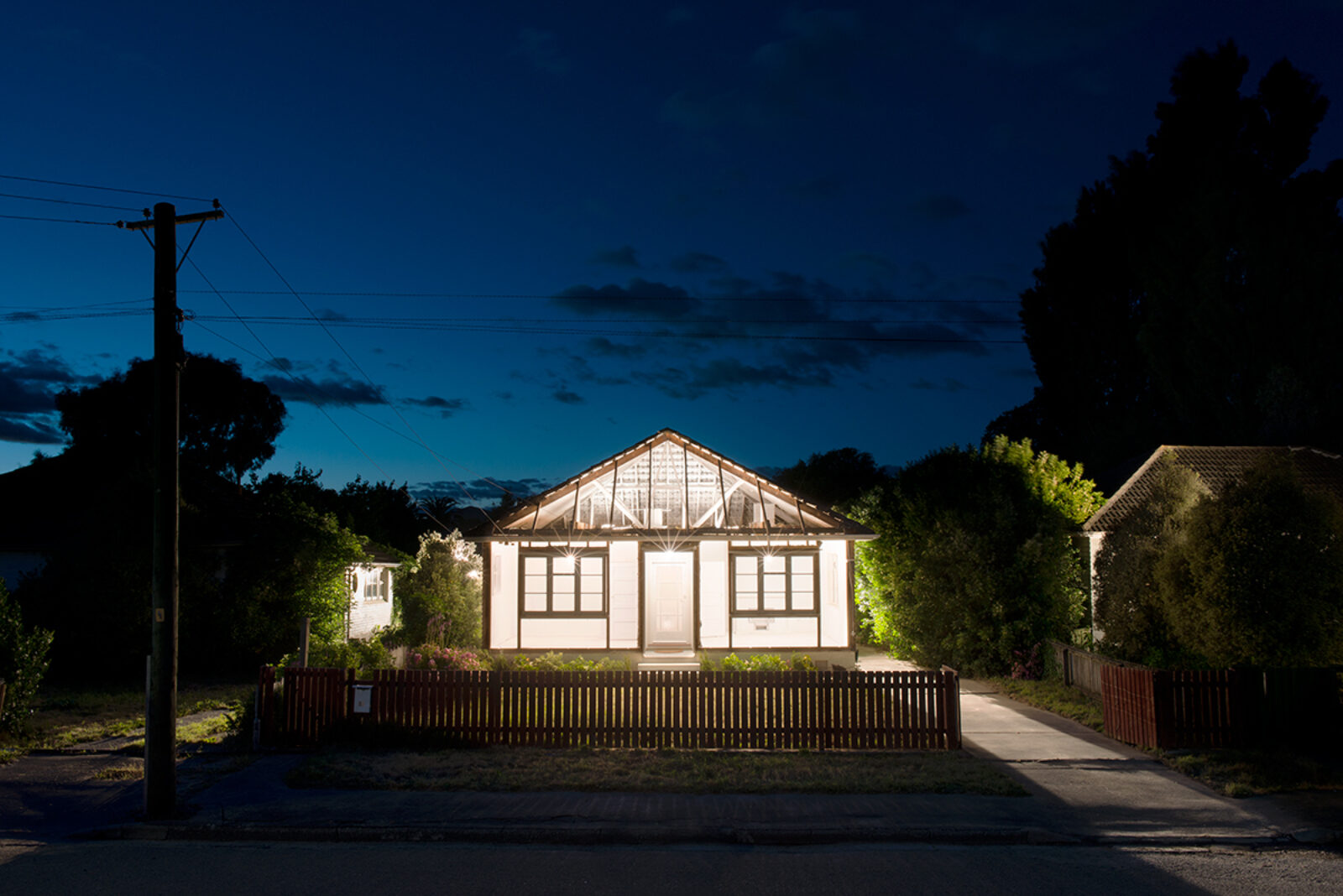
Number Twelve, 2013
Archival digital print
Selected photographic work from FINAL ACT
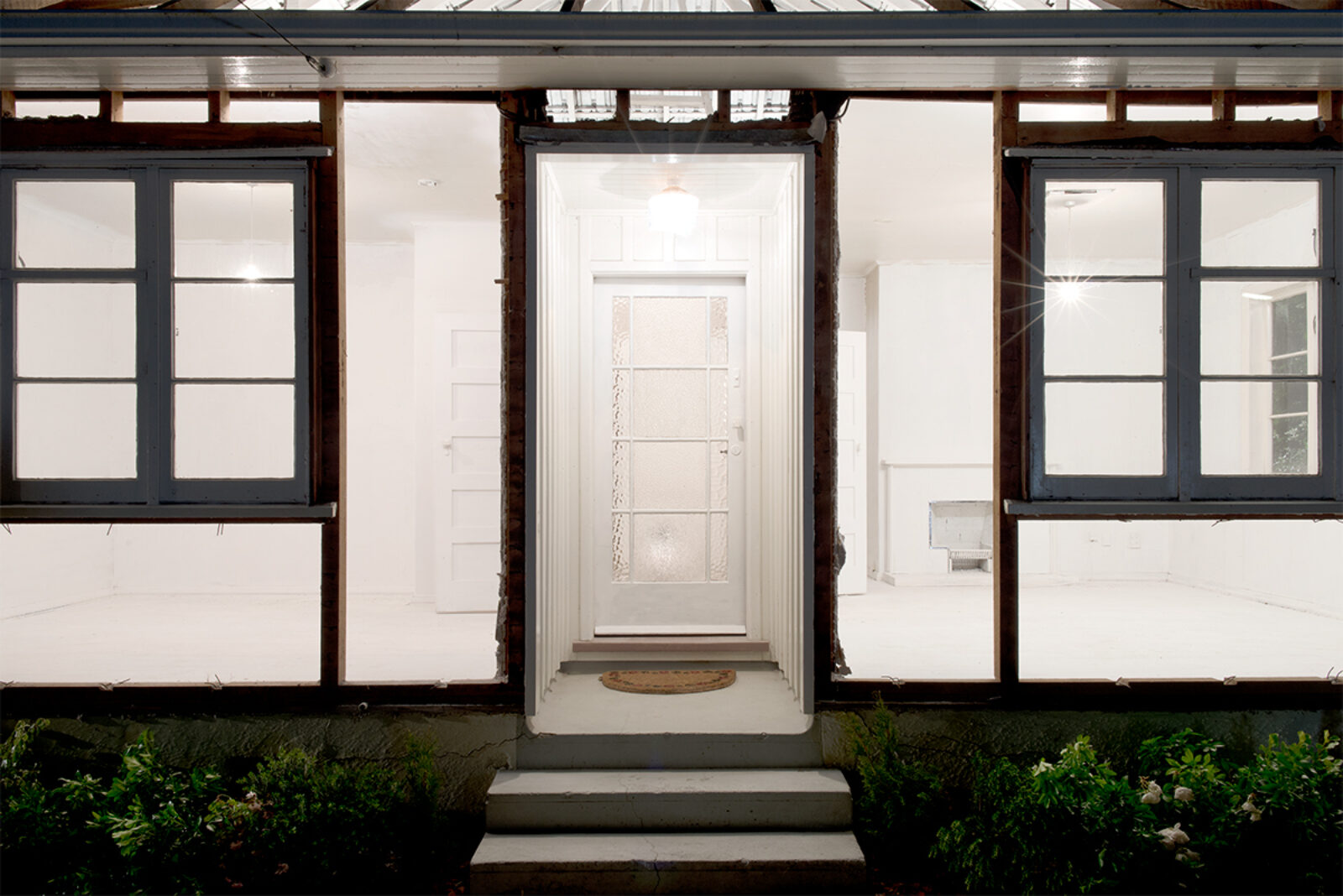
Number Twelve detail, 2013
Archival digital print
Selected photographic work from FINAL ACT
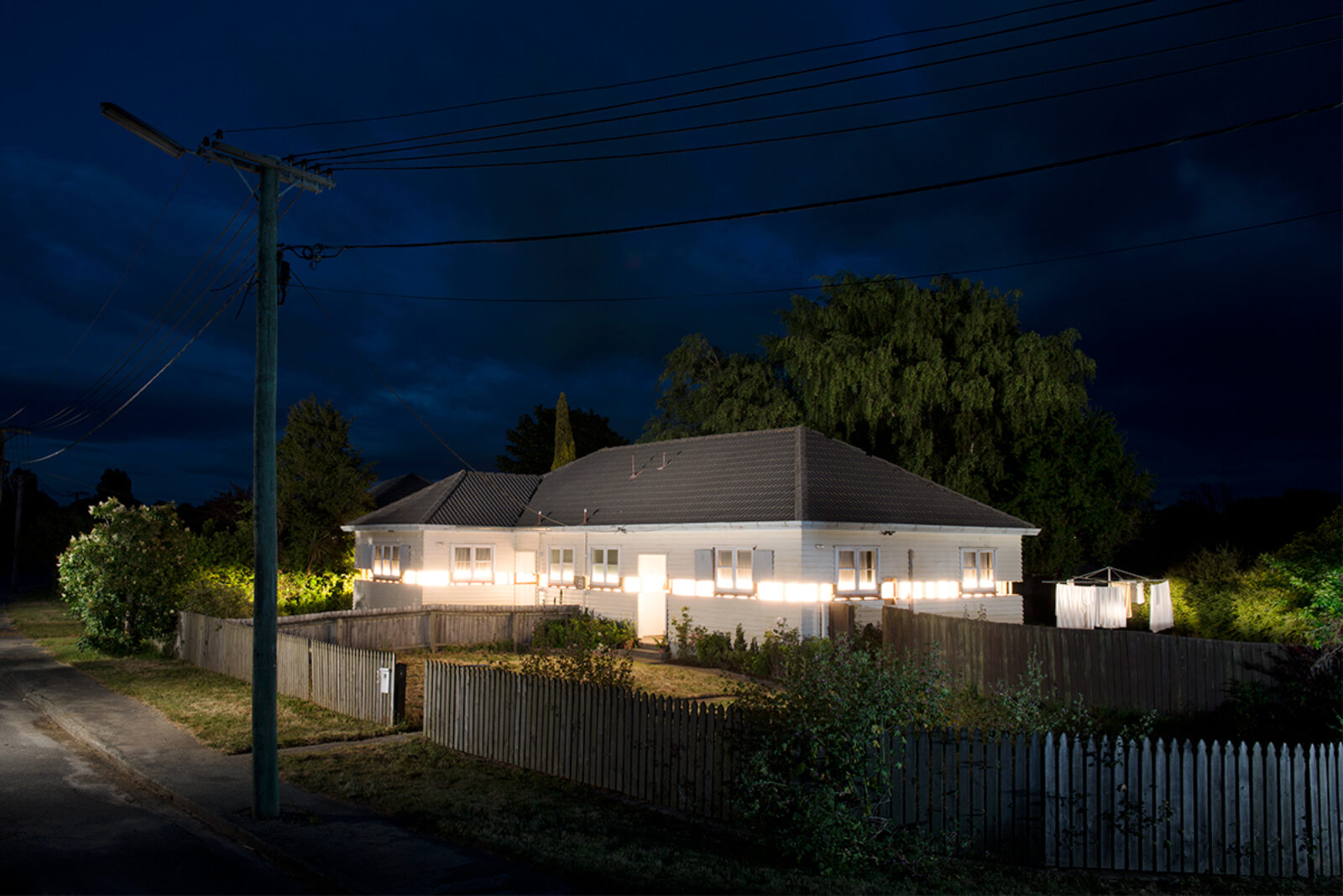
Number Thirty-nine, 2013
Archival digital print
Selected photographic work from FINAL ACT
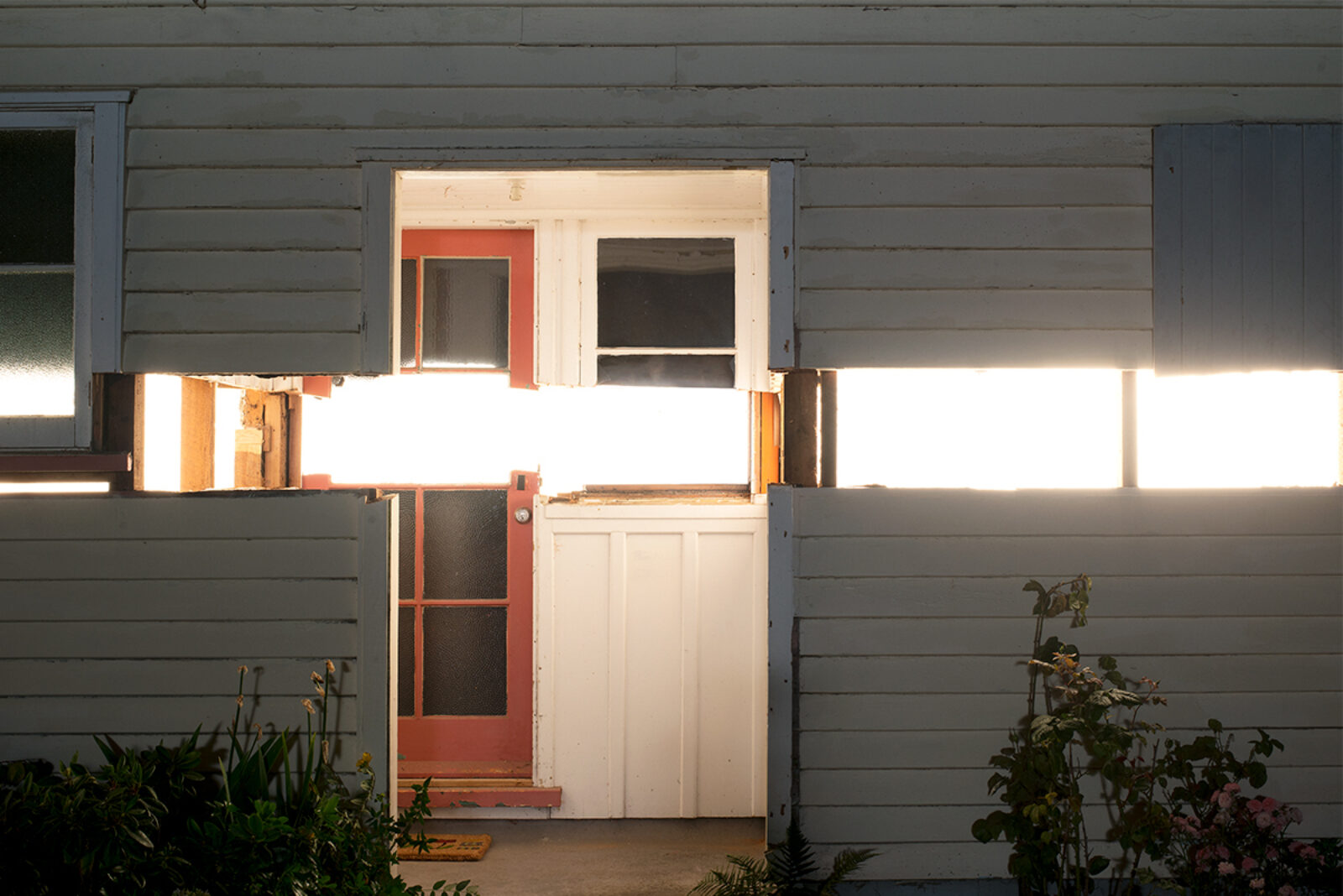
Number Thirty-nine detail, 2013
Archival digital print
Selected photographic work from FINAL ACT
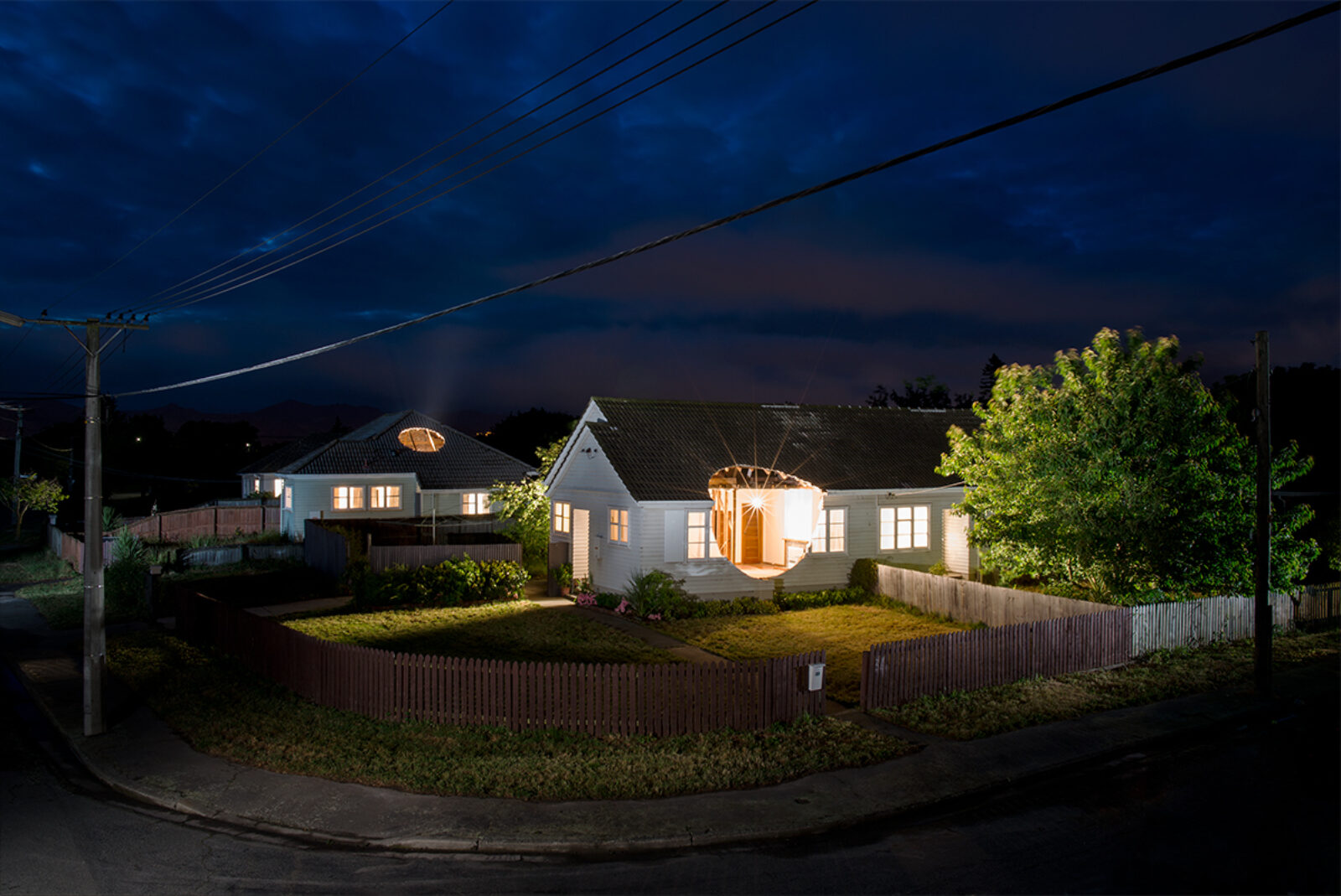
Number Thirty-four, 2013
Archival digital print
Selected photographic work from FINAL ACT
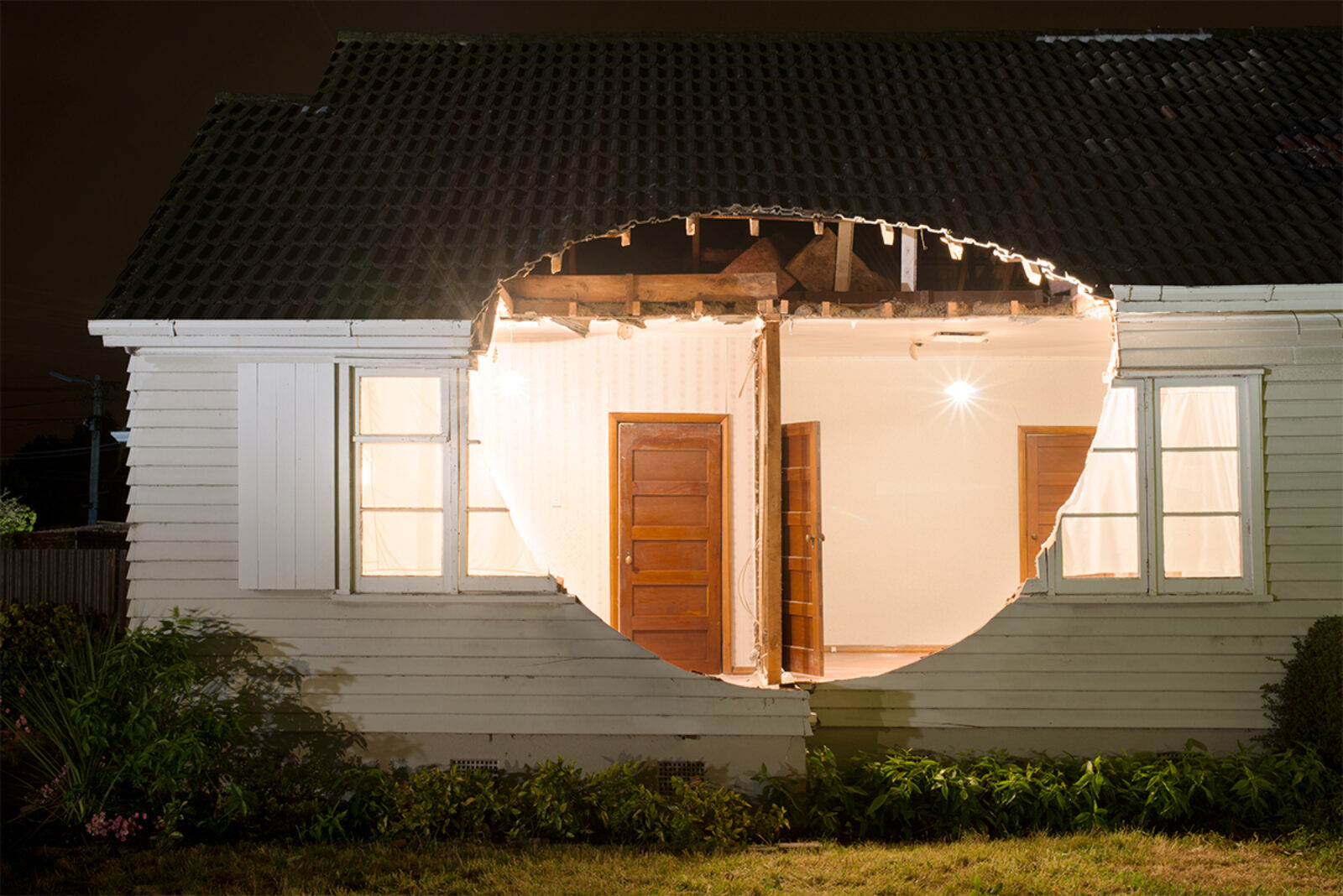
Number Thirty-four detail, 2013
Archival digital print
Selected photographic work from FINAL ACT
Film Work
Exhibition
Research + Process
Writing
STATEMENT: 'Making Final Act'
by Ian Strange
Originally published by GIANY [Greek Institute of Architects New York], 2016
STATEMENT: 'Making Final Act'
by Ian Strange
Originally published by GIANY [Greek Institute of Architects New York], 2016
Making Final Act
by Ian Strange
For the past seven years, my art practice has focused on the home and suburbia. I have created large-scale sculptures, films, photographic works, and site-specific interventions on homes in the USA, Australia, New Zealand, Poland and Japan working with communities in disaster zones, affluent neighborhoods and post-GFC-affected regions.
Through this ongoing body of work I have become specifically interested in the home as a psychological symbol and the false sense of permanence it seems to represent. At the center of my art practice has been the creation and documentation of large-scale site-specific interventions directly onto suburban homes, collaborating with large teams, technicians, and with the local communities themselves. These interventions often involve directly marking or cutting the homes. Attempting to place the psychological interior of these homes onto their exteriors, revealing the home’s vulnerability and questioning its sense of permanence.
These interventions are meticulously documented in film and photography. This documentation process uses film lights at dawn and acts to heighten the emotive intent of the work. Placing the home in the familiar space of mass culture, the home seen in film and television. By borrowing the familiar tropes of commercial film and photography I mean to elevate the homes and the interventions, removing a level of specificity to create a proxy for all homes. This allows the works to be considered as a universal home, the idealized and imagined home, the home of memory, tv, and childhood.
In November 2013 I created a body for work titled FINAL ACT in Christchurch, New Zealand. At the invitation of Rise Festival and the Canterbury museum, I was offered the opportunity to create works in Christchurch’s residential “Red Zone” an area containing over 16,000 houses slated for demolition following a devastating earthquake in 2011.
FINAL ACT was designed to be a film, photography and installation-based project and museum exhibition of four house interventions documented in collaboration with cinematographer Alun Bollinger [Lord of the Rings, Heavenly Creatures]
Working in a still active disaster zone involved a large level of community consultation and collaboration. The mass exodus of people from the now abandoned suburbs and resulting local tensions were exacerbated by prolonged insurance claims and controversial redevelopment plans. Adding to this homes were being demolished at a high rate and with very little record taken of these spaces. Arriving three years after the earthquake and with demolition on-going, the festival and museum curators were interested in a work that would archive these homes but also act as a dialogue with a community still healing. Over a period of 3 weeks, I worked with community groups, volunteers, producers, engineers, the earthquake recovery authority, and my own crew to create large geometric cuts into four homes on one suburban street. After each cut was made the interiors were painted entirely white. The houses were then lit, filmed and photographed over three nights.
The final film and photographic documentation highlighted the negative space of the cuts in the houses, with light beaming out. I wanted to open up the homes, expose their vulnerability and loss of function. While in part a homage to the works of Gordon Matta-Clark and Richard Wilson, they are also reactive to the reality of the entire earthquake-affected region (most homes in the ‘Red Zone’ were split, sunk on an angle or left with gaping holes following the earthquake, simultaneously devastating and reminiscent of seminal works by Wilson and Matta-Clark). The final film and photographic works act as a permanent emotive archive of these since demolished Christchurch homes. This work was then archived and acquired by the museum’s permanent collection as a record of these homes and the 16,000 other homes which were demolished.
FINAL ACT premiered in a solo exhibition at the Canterbury Museum, Christchurch from December 2013 to March 2014.
—
Originally published by GIANY [Greek Institute of Architects New York] as a part of ‘A Shelter for Architecture’
ARTICLE: 'Rising up in the Red-Zones of Christchurch'
by Chris Johnston
Originally published in The Age Newspaper, December 20th, 2013
ARTICLE: 'Rising up in the Red-Zones of Christchurch'
by Chris Johnston
Originally published in The Age Newspaper, December 20th, 2013
Rising up in the Red-Zones of Christchurch
by Chris Johnston
We’re in a derelict suburb of Christchurch called Avonside in the heart of the New Zealand city’s earthquake red zone. The houses are mostly still standing but no one lives here. There is no power, water or sewerage. The houses are boarded up and tagged, with overgrown gardens, like ghosts of the recent past. The two big earthquakes here were in September 2010 and then again five months later in February 2011. In the second earthquake 185 people died. Over the course of both, most of the central business district of the south island’s biggest city was destroyed and large swaths of suburbia rendered uninhabitable.
The ”red zone”, a series of suburbs and the CBD that includes Avonside is for homes on land so badly damaged they will not be rebuilt for a long time. There are 8000 houses in Christchurch in this zone, in the east and southern parts of the city. Avonside is on the river Avon to the immediate north-east of the CBD. It is, or was, a working class area of public housing and tenants.
The roads in Avonside are cracked and jagged. Dried liquefaction, the unearthly mud that bubbled up from underground to coat the city’s streets, sits in stagnant, crusty pools. Remnants of life – a pram, a shopping trolley, a beer crate, a busted bike – lie discarded.
It seems an unusual place for an Australian artist making something beautiful to be. Ian Strange, 31, is originally from Perth; he started as a street artist but now – after a series of extraordinary projects based on ideas around the suburban home – he uses his real name to make conceptual, installation and video art around the world. Here in an Avonside block, with a team of filmmakers, photographers and artist friends as hired help, he looks like a tradesman in an orange high visibility vest, work boots and hard hat. He has secured government permits to be here; the red zones are illegal to enter on account of their hazardous instability.
His project, Final Act, opened on Thursday in the earthquake-torn city as part of an art festival called RISE, organised by George Shaw, an Englishman now resident in New Zealand.
Strange was gifted a series of Avonside red zone houses by the New Zealand government’s Canterbury Earthquake Recovery Authority, the centralised body responsible for everything to do with anything that happens in terms of post-earthquake recovery in the city.
What he has done is literally take the houses apart and propel stark white light out from the inside. One house has the front cut off with the frames intact so it looks like a doll’s house. One is sectioned in a thin strip around the middle so a wide beam of light can emerge horizontally. The others have circles cut in the roofs.
The ”installation” was then filmed at dawn by a film crew led by Alun Bollinger, a veteran Kiwi cinematographer who has a Queen’s honour in his home country. He shot some of Peter Jackson’s Lord of the Rings trilogy as well as films such as Heavenly Creatures, Vigil and Oyster Farmer.
The resulting video and photographs will be exhibited in Christchurch’s museum for RISE. The houses then go onto the red zone demolition waiting list. It is a remarkable project about the meaning of home but also about how a city can recover and move on from a shocking natural disaster that killed many, destroyed dreams and, three years on, has divided those on opposing sides of the redevelopment debate.
”Houses are meant to be permanent structures,” Strange says. ”But they are also permanent emotional structures that we take with us through our lives. What I’m trying to do is break down the walls.”
The situation now in Christchurch and surrounding areas of Canterbury is one of uncertainty, a netherworld between progress (or the idea of it) and bureaucracy-driven inertia.
This Christmas, almost 3500 home owners will still not have confirmed insurance settlements. Another 11,000 have claims in progress but no settlement.
The city’s second hospital, Burwood, will be rebuilt in part by an Australian company, Cockram Corporation. The iconic cathedral will be demolished despite attempts in the Supreme Court to prevent it.
Residential red-zone demolitions are behind schedule. Only 38 per cent of the nearly 8000 uninhabitable homes have been levelled. Work has been held up by insurance processes.
Meanwhile, this week Mary Richardson, chief executive of the Christchurch Methodist Mission, was reported as saying that inequality – in a city basically divided by the earthquake into rich to the north (largely unaffected) and poor to the south (badly affected) – was increasing, with high house prices, low incomes, low educational markers and significant poverty.
The administration of matters arising from the earthquake is done in the capital, Wellington, where the central government (there are no provincial or state governments in New Zealand) has appointed a new minister and ministry to deal specifically with the rebuilding of Christchurch.
The ministry last year released a blueprint of how the CBD will be rebuilt – into separate ”precincts” (legal, sports, arts etc). Critics of the government’s approach, including the Christchurch City Council, say local initiatives have largely been ignored. The government’s line has been that it needed to quickly establish a ”spine” for the rebuild.
”By this time next year, the change will be hard to believe,” says Canterbury Earthquake Recovery Minister Gerry Brownlee, ”but now that so much of the ground work has been completed or is well under way, the more tangible, visible side to Christchurch’s redevelopment will become obvious.”
However, in the wake of the earthquakes, many not-for-profit enterprises with alternative views about the city’s future urban planning emerged. Some are partially funded by the city council, some by community banks, some by philanthropy. All simply do things or organise things – mainly in the rubble-strewn CBD – to make life for the locals easier or more fun. The first and most prominent is a group called Gap Filler.
Director Ryan Reynolds, who has an academic and theatre background, says ordinary Christchurch folk feel ”excluded” from the rebuilding process. ”We are in a legislative state of emergency,” he says. ”The new ministry and the new minister are totally in charge of Christchurch … at any point they can step in and overrule anything local government is doing or wanting to do.
”There are a lot of people feeling incredibly disempowered. Obviously a natural disaster is disempowering when you realise you have lost control of the things you previously controlled but that was a tiny shock compared to the giant shock of the government taking over and locking everyone out of the central city for more than two years. When three years on you are still battling with insurance on your ruined house, when the bureaucracy steps in, that is far more disempowering than an earthquake.”
Gap Filler’s projects so far include a de facto town square called the Pallet Pavilion – made from blue wooden pallets – with meeting and event spaces, 3D printers, free Wi-Fi and food vans; a book exchange in lieu of closed libraries; a petanque club and town square in the port town of Lyttelton and an offshoot organisation called Life in Vacant Spaces which fixes legal, traffic and logistical problems for groups wanting to put on events in the CBD.
Reynolds’ thinking is the grassroots things that have happened organically in the city since the earthquakes should be part of the rebuild blueprint rather than being excluded from it. The buzzword in disaster recovery is ”transition” – especially in the third year after a cataclysmic event – in which studies (and lessons learnt from troubled Kinglake post-Black Saturday) show social and psychological problems in survivors worsen.
”Transition means temporary with an aim of influencing the longer term,” Reynolds says.
So what does this all have to do with Ian Strange and his strange art? What does it have to do with deconstructing the ghosts of red zone houses and illuminating them from within with clean white light?
Huia Lambie works with another not-for-profit ”transition” agency, called the Ministry of Awesome, which prioritises art and culture as a way of showing a battered city what it is capable of and, in the end, what it is.
She says the gift of the earthquakes is that the city has a new energy and that it is a blank canvas, ”a place for opportunity”.
Ian Strange, she says, is ”honouring” the city.
”He’s saying these houses had a soul and a life force. He is creating a legacy of them with their image. He cares about that level of the story, the story of the houses and the land and the people.”
The Final Act project is the third in a trilogy in which all are concerned with the psychology of home. In the first, Home, Strange, the son of teachers, rebuilt his childhood house in suburban Perth in an installation on Cockatoo Island.
The second last year was based in the United States. In cities affected by the global financial crisis, such as Detroit, he painted abandoned factory workers’ homes in bright red, dark void-like circles, skulls and red X’s and then, in partnership with city fire departments, set fire to them.
Photographs, film and an installation from Suburban was exhibited in the Ian Potter Centre at the National Gallery of Victoria this year.
Final Act is the next step. In many ways, what is represented is the transition between the old Christchurch – or indeed any crisis-torn urban and suburban space – and the new version, which is yet to be determined. The white light is a religious or spiritual symbol, although Strange plays this down this; he prefers to talk about the light in purely aesthetic terms.
”It’s neutral light,” he says. ”The cool light of day, the warm light of houses and white light neutral, sitting in the middle.”
Yet, in religious art, white light is a path towards the afterlife or a path towards heavenly meaning. The people from these houses are gone. Maybe they moved cities or countries or managed to buy again in one of the new estates springing up on Christchurch’s fringe. Maybe some of their kin died in the city.
Their memories and associations might still be in the houses; their spirits might still be there. Ghosts of them, ghosts of families, ghosts of lives partially lived.
Strange admits that, yes, that could be a theme of what he has done here. ”The humanity inside the homes,” he says. ”Rebirth. This is like the last act of these houses sitting in a hyper reality I have built for them. The houses have been changed and subverted. The emotional aspect of them is larger now.’
—
Credits
'Final Act' was commissioned by RISE Festival and the Canterbury Museum, premiering in an exhibition of the same name at the Canterbury Museum, Christchurch, New Zealand, from December 19, 2013, to March 23, 2014, curated by George Shaw.
[FULL CREDITS]
Artist/Director: Ian Strange
Executive Producer: Jedda Andrews
Producers: Huia Lambie, Jedda Andrews
Consulting Producer: Jacqui Wood
Director of Photography: Alun Bollinger
Head of Art Department: William Heerey
Camera Operator: Kirk Pflaum
Camera Operator - 2nd Camera: John Chrisstolfell
Camera Assistant: Lili Lovell-Wood
Grip: James Creevey
Gaffer: Andy Rennie
Lighting Assistant: Buddy Rennie, Suman Giri
Unit Coordinator: Belinda Pflaum
Editor: Richard Lorde
Colourist/VFX/Post Production: Richard Lorde
Additional Post Production: Dominic Pearce
Editor Assist - Data Wrangler: Alex Parson
Demolition and Construction: Graeme Thompson
Project Manager: Jedda Andrews
Behind the Scenes Photographer and Videographer: Daniel Gallagher, Lloyd Stubber, Conor Bowden, Sam Miller, Peter Young
Artist Assistant/Art Department Assistant: Sam Miller, Conor Bowden, Laura Nixon, Vanessa Da Silva
With thanks to: Rise Festival, George Shaw, Shannon Webster, Amy Silk, the Canterbury Museum, Neil Phillips, Sarah Murray, Sabastian Denize, Peter Young, Charlie Gates, Chris Johnson, Geoff Booth, Pete Davies, David Halsall, Tim Pow, and Robyn Lambie. This project would not have been possible without the generous support and participation of the former neighbours and community of Avonside, and the City of Christchurch.
The artists and producers of this work wish to acknowledge the unceded lands upon which it is created. We acknowledge the traditional custodians of the land, the Ngāi Tahu iwi, and extend our respect to all Māori people who reside there today, and acknowledge the enduring presence and contributions of the Māori people in Aotearoa.

